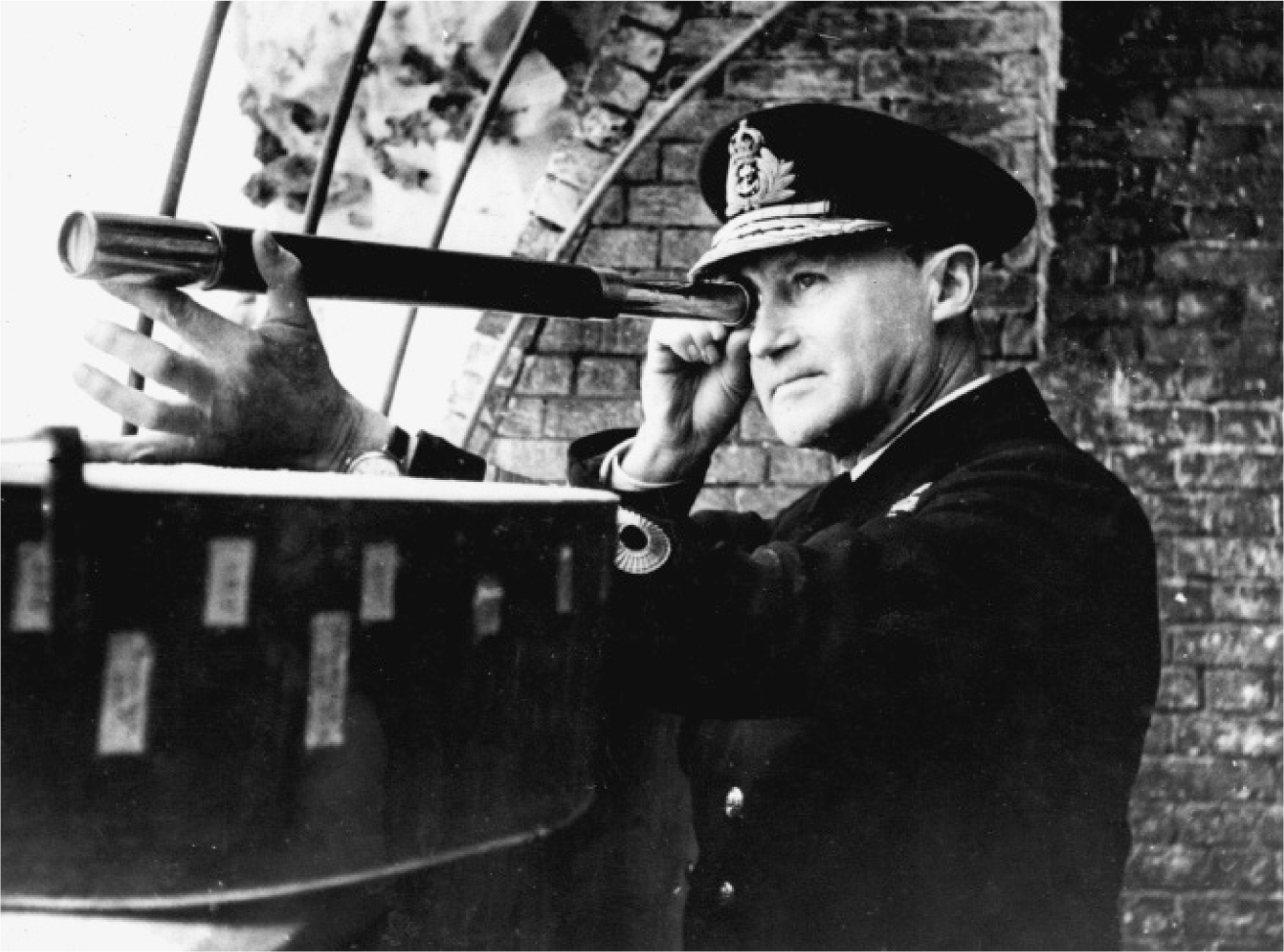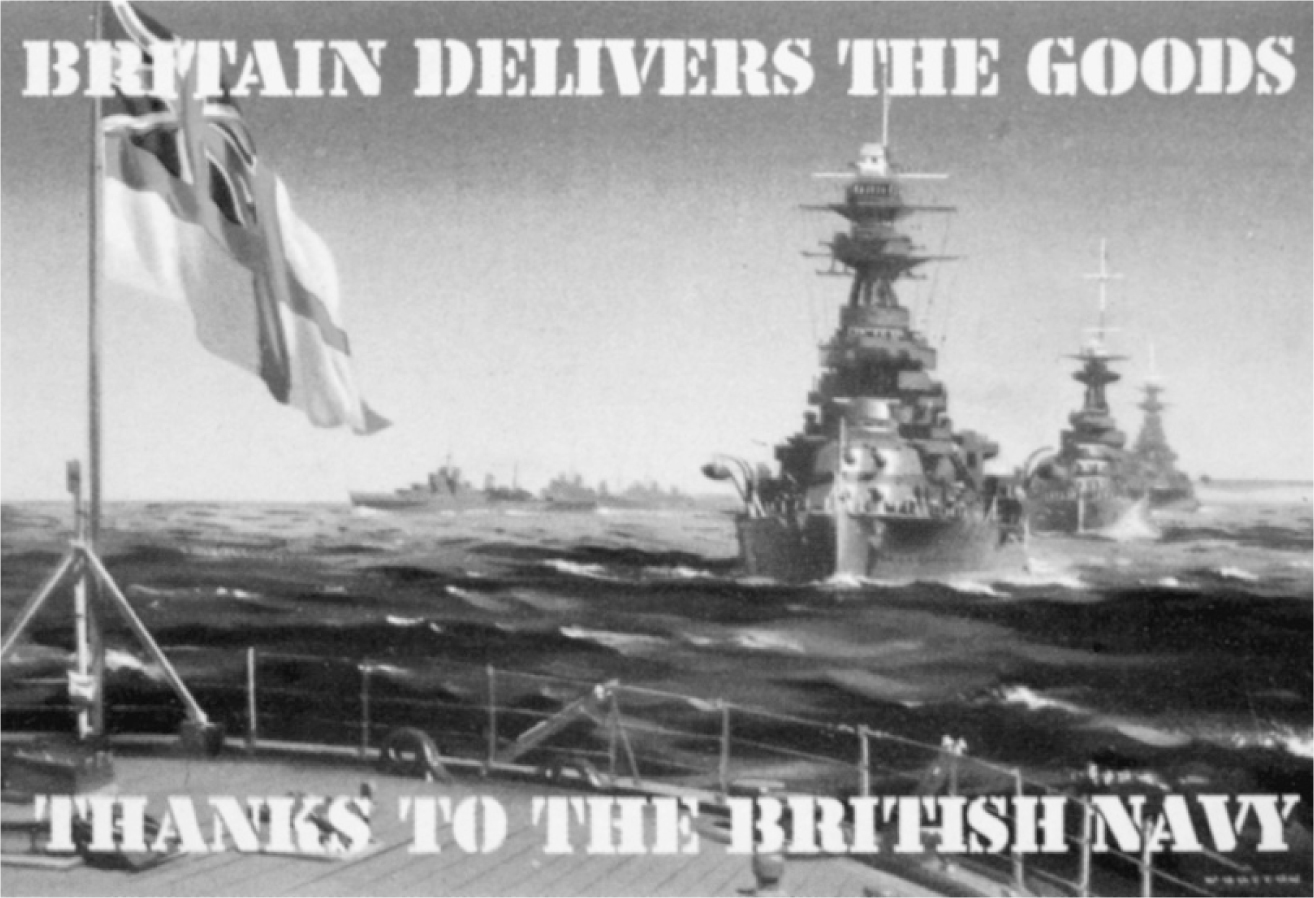
Admiral Sir Bertram Ramsay surveys the channel from his headquarters in the White Cliffs of Dover.

Admiral Sir Bertram Ramsay surveys the channel from his headquarters in the White Cliffs of Dover.
IN THE LONG history of Britain, the one thing that everybody has always relied upon when all else failed is the steely professionalism of the Royal Navy. As early as May 23, when there was still confidence in the appointment of General Weygand to succeed General Gamelin as Allied commander in chief, Churchill had called for a plan to be made in case it became necessary to withdraw the BEF from the French coast.
This was farsighted, but in fact the navy was ahead of the prime minister. On May 15, only five days after the German attack on France and the Low Countries, when it was still supposed that the Allied armies might defeat the Germans in Belgium in accordance with Gamelin’s Plan D, a tiny announcement appeared in the Times under the innocuous headline “Motor-boat Census.” The single paragraph in small print was buried on page three, between “Naval Promotions” and the death in Toronto of the anarchist Emma Goldman, and can have had little effect on anyone but those boat owners and yachtsmen who were assiduous readers of the Times: “The Admiralty has made an order requiring all owners or occupiers of self-propelled craft (including motor boats) in Britain between 30ft and 100ft in length used for their own pleasure or for fare-paying passengers for pleasure . . . to send particulars to the Admiralty within 14 days of yesterday.”

This meant almost every small motorboat or motor yacht in England, in addition to such larger vessels as the familiar paddle-wheel sightseeing and pleasure steamers on the Thames, with their rows of varnished wooden seats. Ostensibly, this was a call-up for “minesweeping duties,” but a skeptic might wonder how useful a thirty-foot motor yacht would be for dealing with a German naval mine.
Just as General von Manstein was the architect of the plan to cut off and defeat the BEF, the architect of the plan for saving it was then Vice-Admiral Bertram Ramsay. Ramsay was not a swashbuckling naval officer of the Horatio Hornblower school; he was a thoughtful technocrat and planner, and it is no accident that he would go on to become General Dwight D. Eisenhower’s trusted planner for the naval forces used in the invasions of North Africa (1942), Sicily (1943), and Normandy (1944), and naval commander of the last two. Ramsay has been criticized for being impatient, “authoritarian,” and “a stickler” for details, not uncommon traits among admirals, but he was also lucid, visionary, and not without savoir faire—after all, he ended up commanding American senior naval officers as well as his own, not an easy task given the clash of sensitivities and pride between the Royal Navy and the United States Navy.
Ramsay’s interest in technology coincided with the Royal Navy’s ambitious plans for modernization at the turn of the century. As a junior officer he had served on board the revolutionary HMS Dreadnought, the warship that at one stroke made the battleships of every fleet in the world obsolete in 1906 and did more than anything else to spark off the naval race between Imperial Germany and Great Britain. He went on from there to attend the Naval Signal School—wireless telegraphy was changing naval strategy overnight—then attended the prestigious Royal Naval War College, a new and ambitious institution, and a huge intellectual jump from the old tradition of learning naval leadership by experience on the deck of a warship. In the First World War Ramsay had the good fortune to command a monitor on the Dover Patrol, then a destroyer that took part in the failed second raid on Ostend in 1918 (commanded by Admiral Roger Keyes), thus ensuring that he knew the water, the tides, the ports, and the treacherous shallows of the English Channel like the back of his hand.
He rose steadily through the ranks at sea or in the Admiralty until 1935, when he was made chief of staff to the commander in chief of the Home Fleet, Admiral Sir Roger Backhouse. Although Ramsay and Backhouse were and remained friends, they clashed sharply over naval doctrine and Ramsay, by now a rear admiral, was moved to the Retired List in 1938 after refusing several postings. He spent his time in retirement working on a plan to “reactivate the Dover Patrol,” and late in 1938 he was “coaxed” by his old friend Winston Churchill, whom he had known since 1903, to give up retirement and return to uniform as vice-admiral in command of Dover operations at the age of fifty-seven. He instantly shook things up.
Dover is a small but busy port, for the most part artificial, consisting of stone breakwaters that have been built up since the seventeenth century, and nestled by the famous White Cliffs.* In modern times the small town has grown to accommodate elaborate docks for the cross-Channel ferries and railroad ferries, a large fishing fleet (Dover sole), a yacht marina, a cargo area, and, by 1939, a substantial naval presence. Dover’s small size belies its immense commercial importance—it represented the shortest and most convenient link between the United Kingdom and the Continent until the building of the Channel Tunnel—and its vital importance to the Royal Navy, for it overlooks the narrowest point in the Channel and commands the entrance to and the exit from the North Sea, still today the “busiest seaway in the world.” More important to the Royal Navy, control of the Channel from Dover to Calais obligated German warships and submarines to go around the northernmost point of Scotland to enter the Atlantic or to run the gauntlet of British destroyers and minefields controlled by the flag officer commanding Dover.
If ever there was a serendipitous posting this was it—the Dover command might have been devised for Vice-Admiral Ramsay, or he for it. Even though Britain was still at peace, he had hardly even settled in Dover Castle—the largest and the oldest castle in England, which includes among other historical wonders a lighthouse built during the Roman occupation of England—than he swept away two decades of neglect and immediately set about putting Dover on a war footing. He reopened the maze of tunnels that had been dug deep into the white chalk cliffs in anticipation of Napoleon’s invasion and used them to store mines and fuel oil. He also rendered the harbor safe against submarines, and upgraded the primitive communications to create a modern underground operations room, with a broad semicircular table on which the coming and going of every ship in and out of the Channel could be marked and followed, similar to that which Air Chief Marshal Dowding had created for Fighter Command Headquarters at Bentley Priory.
Ramsay placed his own office in one of the tunnels in the cliffs, with a window looking out over the Channel from which, on the rare very clear day, he could see the coast of France, and began to gather a small flotilla of ships, some of them old pleasure steamers, to lay minefields and sweep for enemy mines. His was not a command of battleships, cruisers, and aircraft carriers—he had nothing bigger than destroyers, most of them old ones destined for the scrapheap, along with a miscellaneous collection of ships requisitioned from civilian owners, including a steamer of the Isle of Man Steam Packet Company that until recently had sailed between Liverpool and Douglas bearing “care-free holiday makers”—but it was still one of the most important commands in the Royal Navy. It was here, or near here, that the Germans would land if they ever attempted an invasion (Dover is less than twenty-one miles from France and only seventy-three miles by road from London), it was from here that many of the troops embarked for France, and it was from here that Ramsay would plan and carry out in extreme haste their return, in what came to be code-named Operation Dynamo.
It was as if in his orderly mind Ramsay had already factored in the possibility of their defeat, even as he was helping to organize the embarkation of the BEF to France in September 1939, not in any spirit of pessimism or from lack of confidence in the War Office or General Gamelin’s war plan, neither of which was any concern of his, but as a natural element of naval professionalism. It was a consequence of Britain’s supreme confidence in its naval power. “Britannia rules the waves,” therefore its navy could take a British army anywhere it was needed, supply it—and evacuate that army if it became necessary, as had sometimes been the case before in British history. That is part of the meaning of “sea power.” It was an eventuality that, even when unspoken lay in the back of every French mind—hence Premier Reynaud’s complaint to General Spears at their first meeting that “British generals always made for the harbors” when things became difficult, a belief that lay behind the determination of the GQG in 1939 to keep the French First Army between the BEF and the sea as a precaution against just this possibility. However, it was part of every naval officer’s training to prepare for the worst, and in Ramsay’s case it was his duty to keep that precious twenty-one miles of sea clear of threats, whatever might happen on land. If the BEF needed supplies or reinforcements in an emergency, he could supply them; if it needed to be evacuated, he could do that too, and made his preparations so that he would not be taken by surprise.
The “eventuality” of rescuing the BEF was something Ramsay gave thought to long before Lord Gort at last made the decision to retreat to Dunkirk and attempt to evacuate his army. On May 15 Ramsay was already taking the first step toward putting every ship and motorboat in the United Kingdom under naval command; on May 19 he participated in a coldly realistic meeting at the War Office to consider, among other things, “the hazardous evacuation of very large forces.” It was decided that if necessary “all available shipping should be placed at his disposal—naval or otherwise.” There was still a week to go before Lord Gort made his decision, or Churchill embraced the idea of evacuation, but Admiral Ramsay had already been making his plans.
_________________________
* Always the symbol of Britain’s independence and sturdy separation from the Continent, the White Cliffs inspired one of Britain’s most popular wartime songs, first sung by Vera Lynn: “(There’ll be Bluebirds Over) The White Cliffs of Dover.”